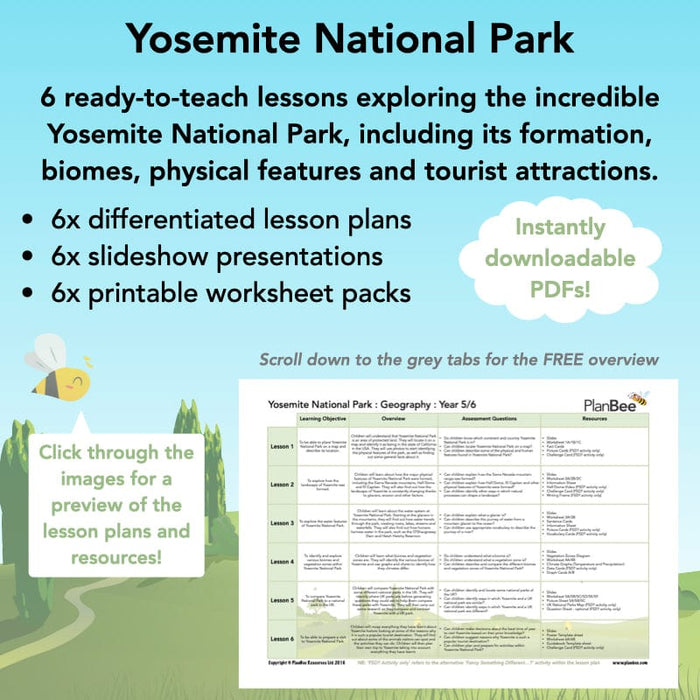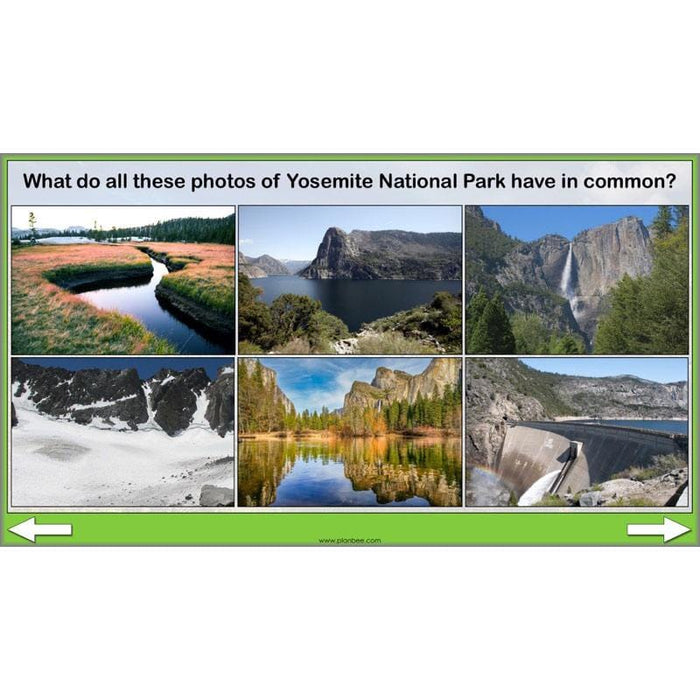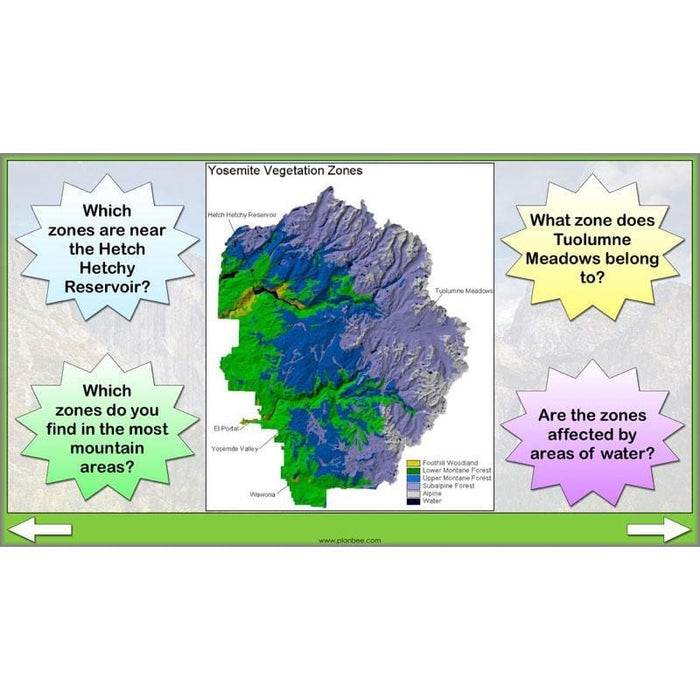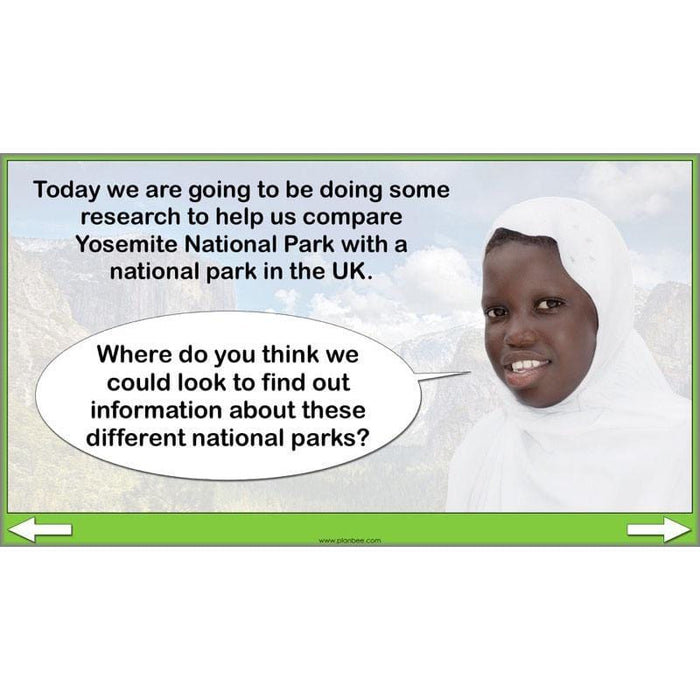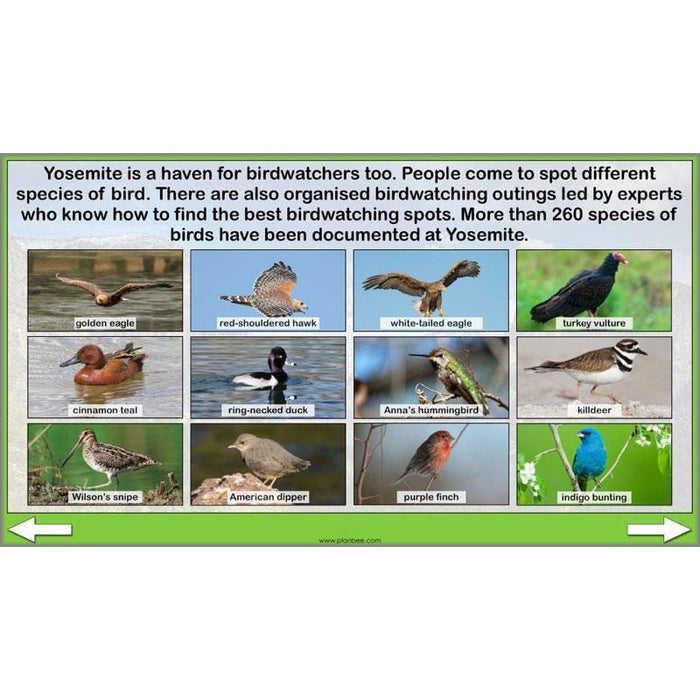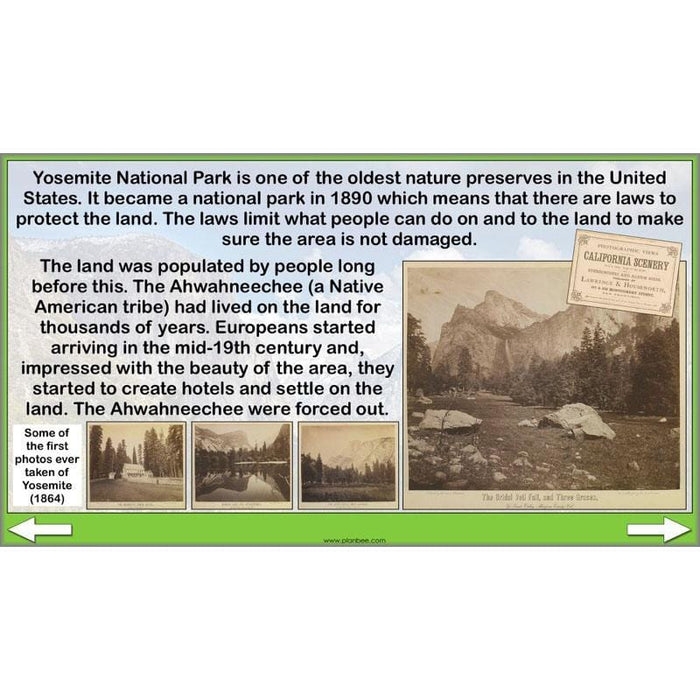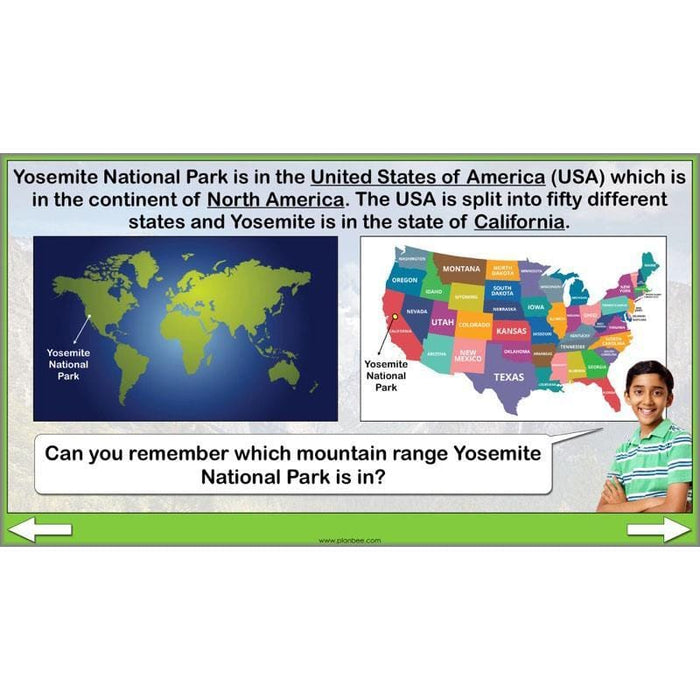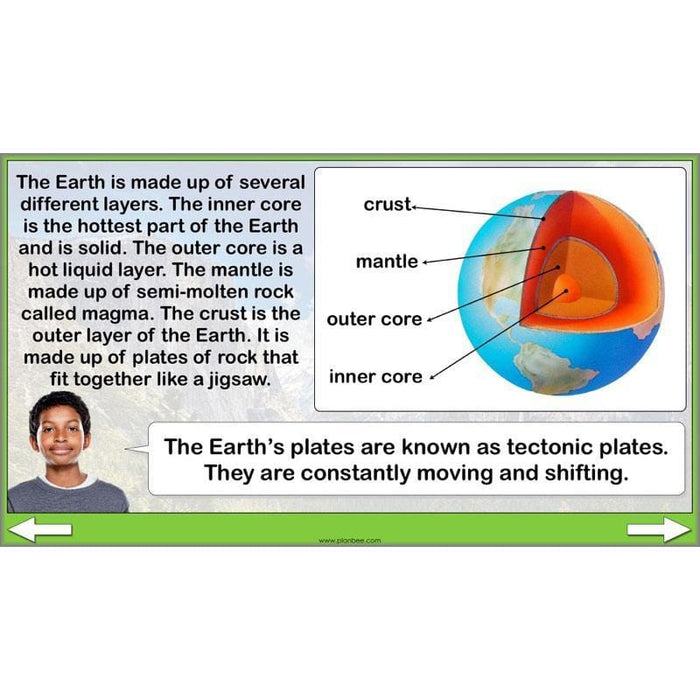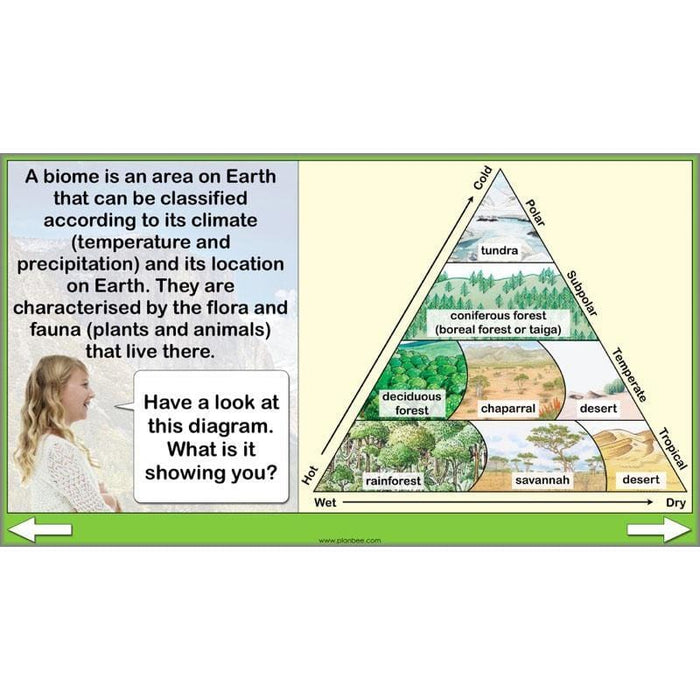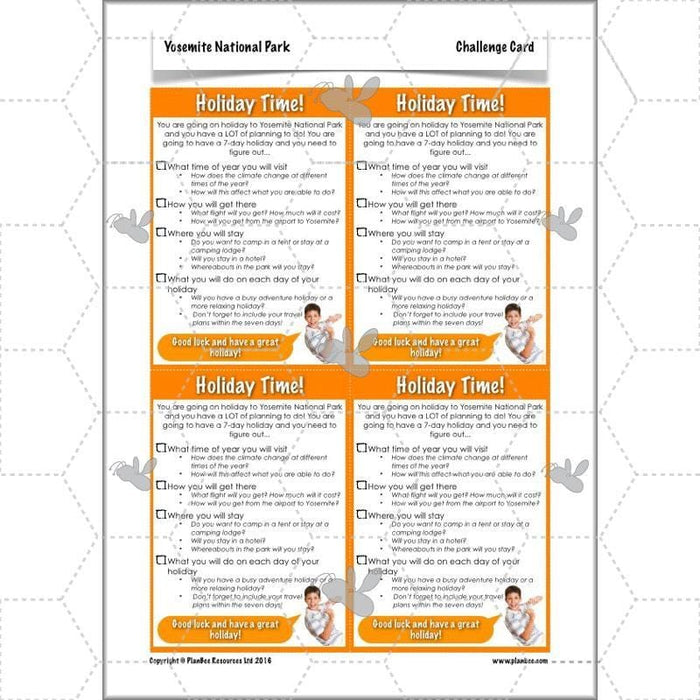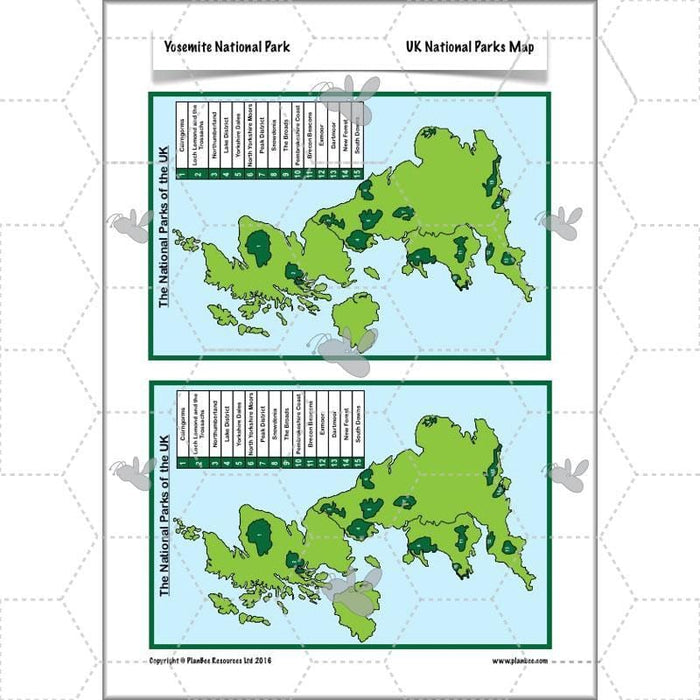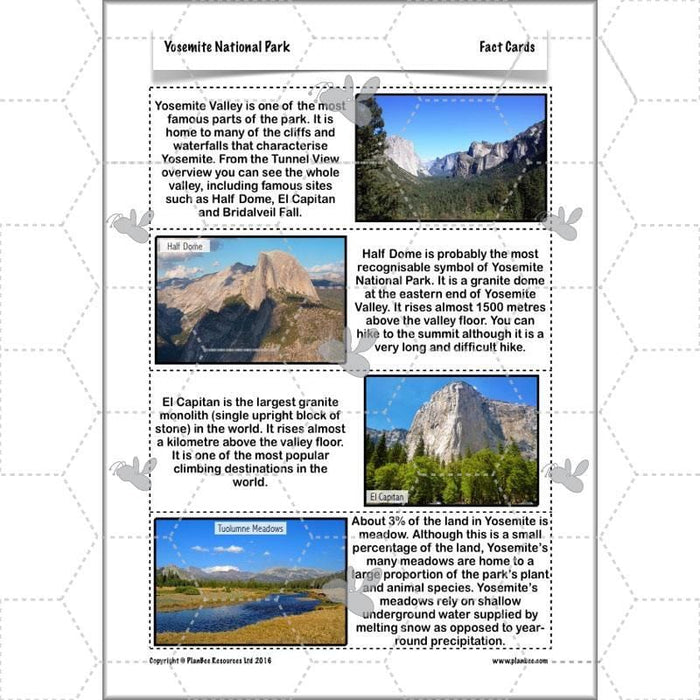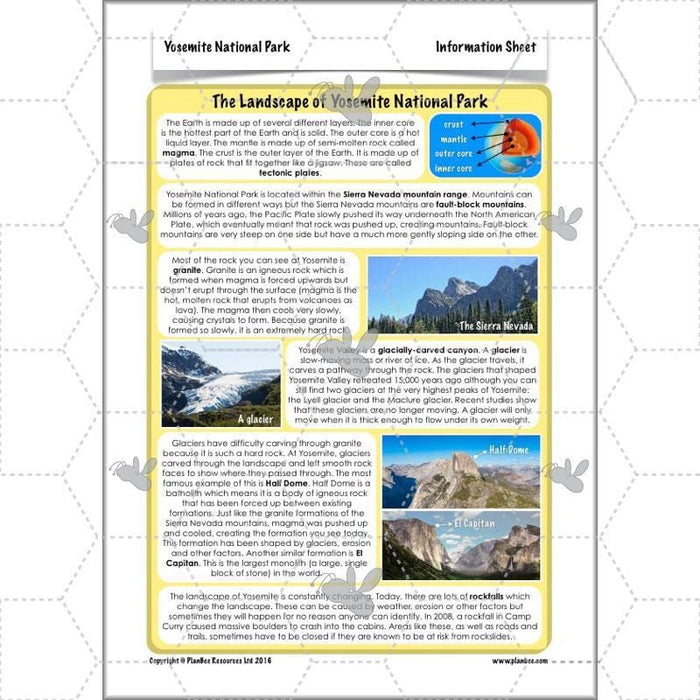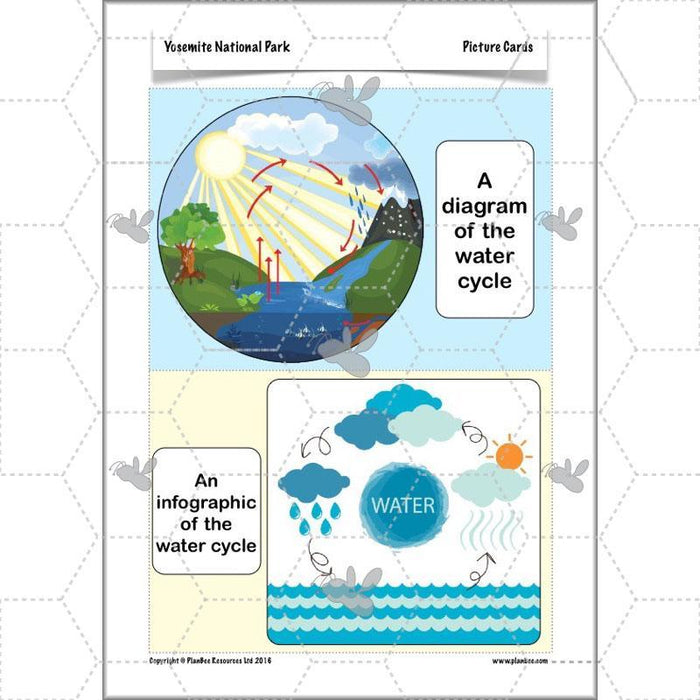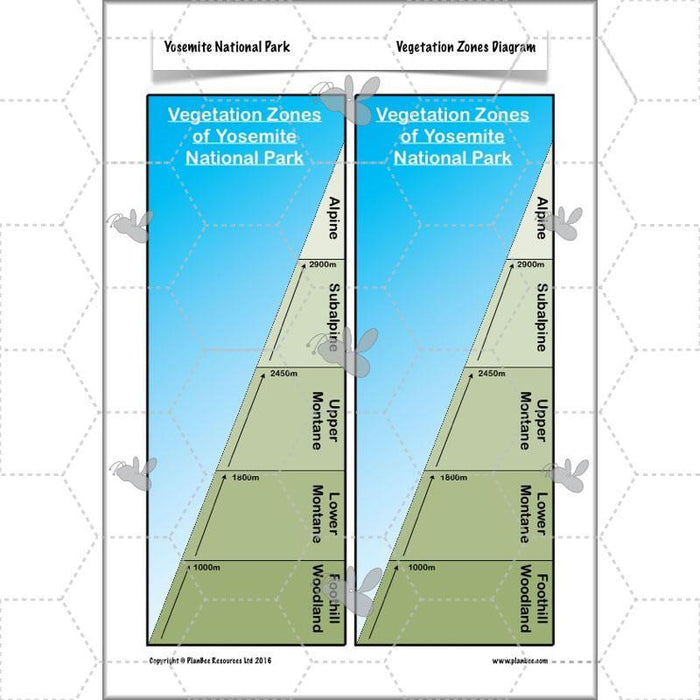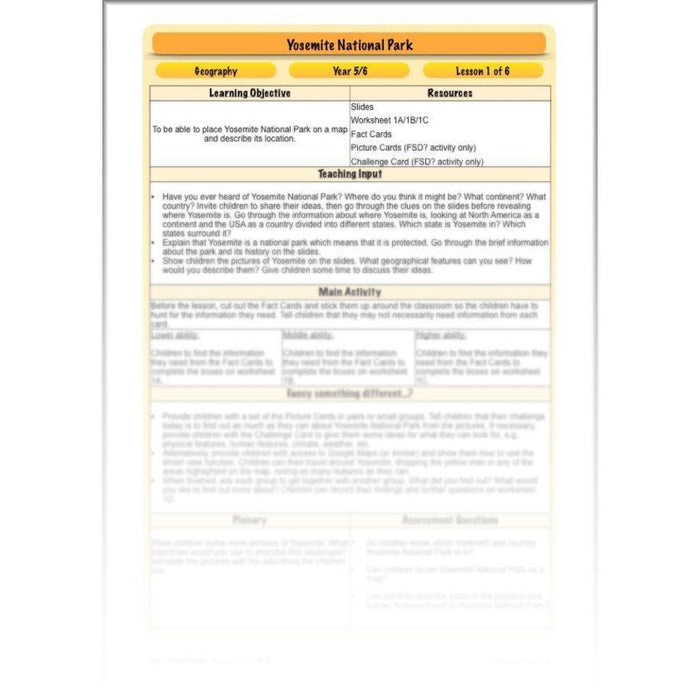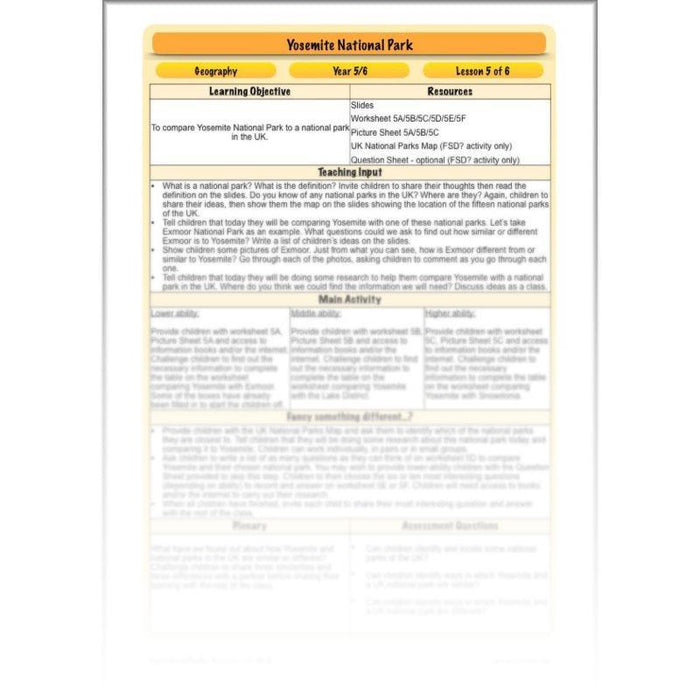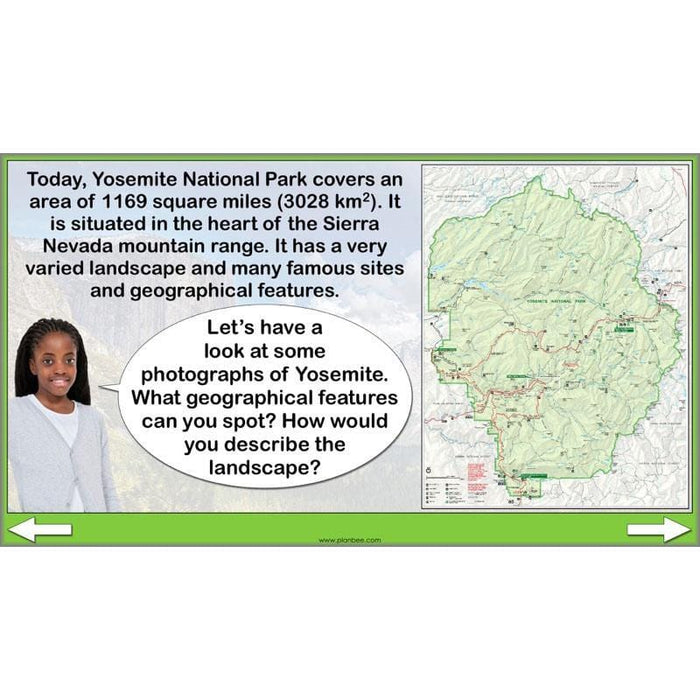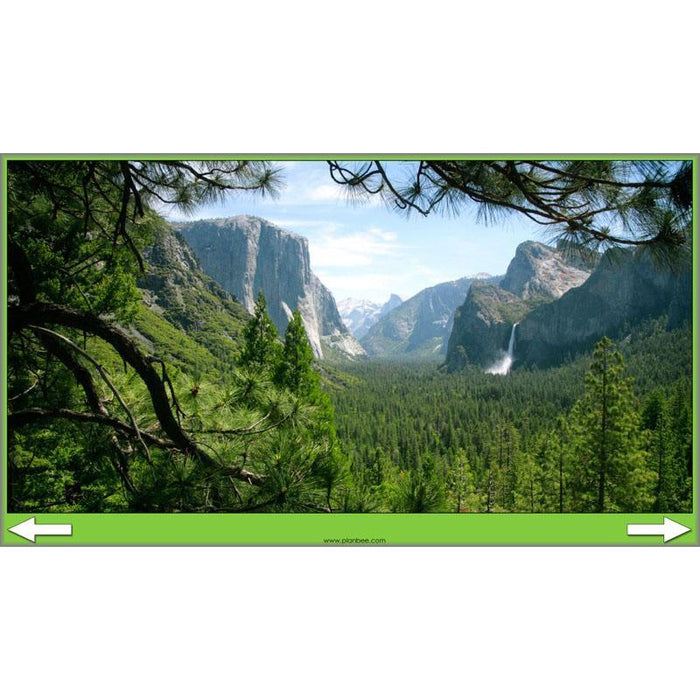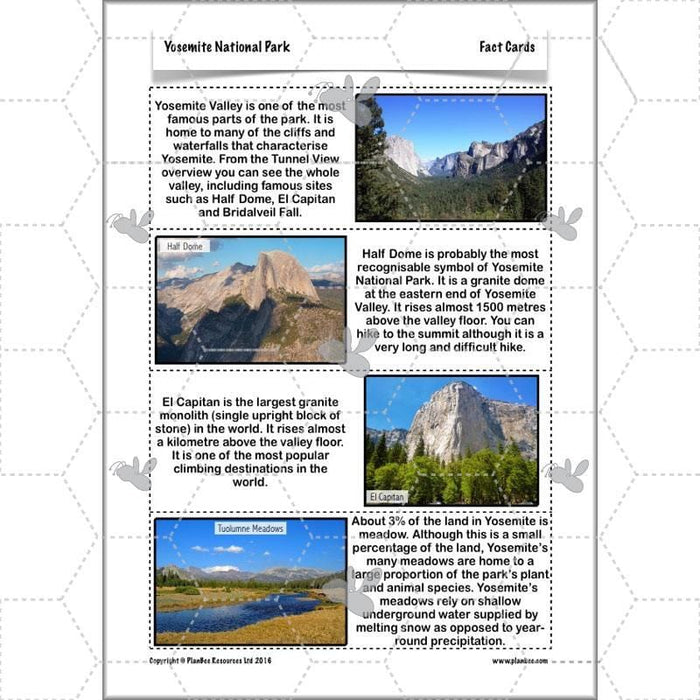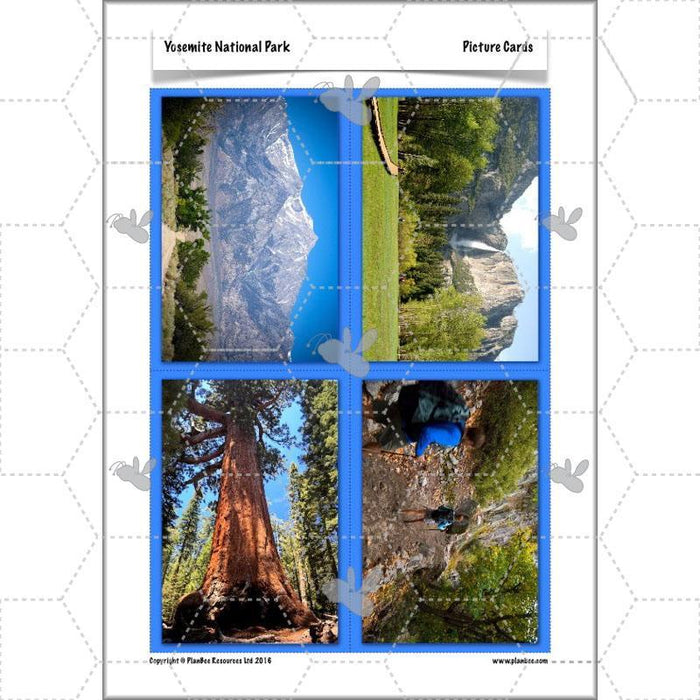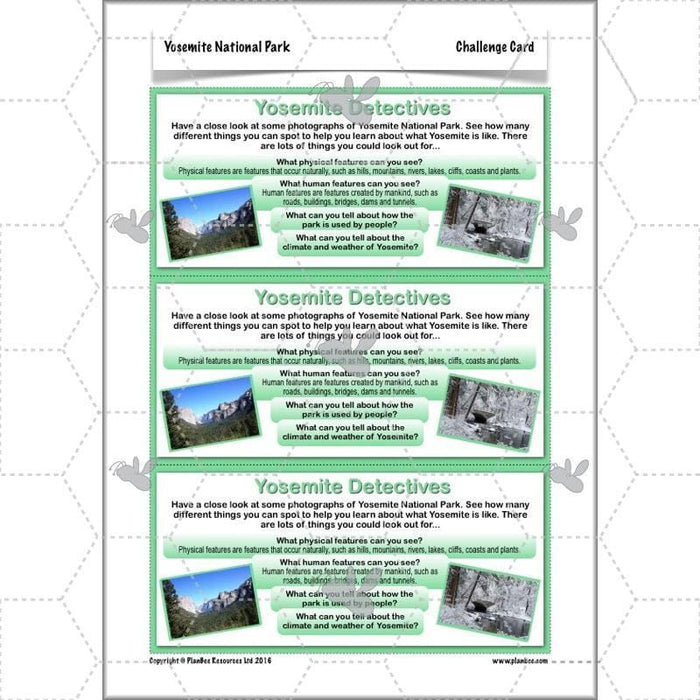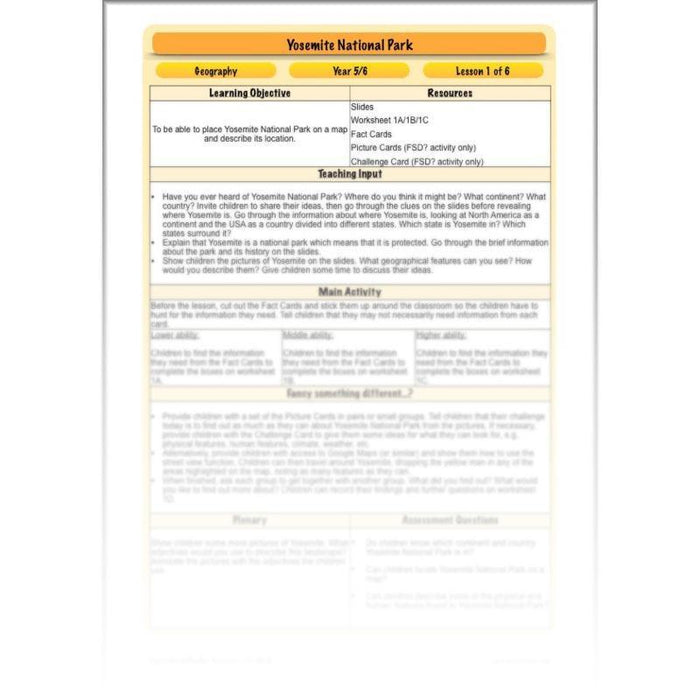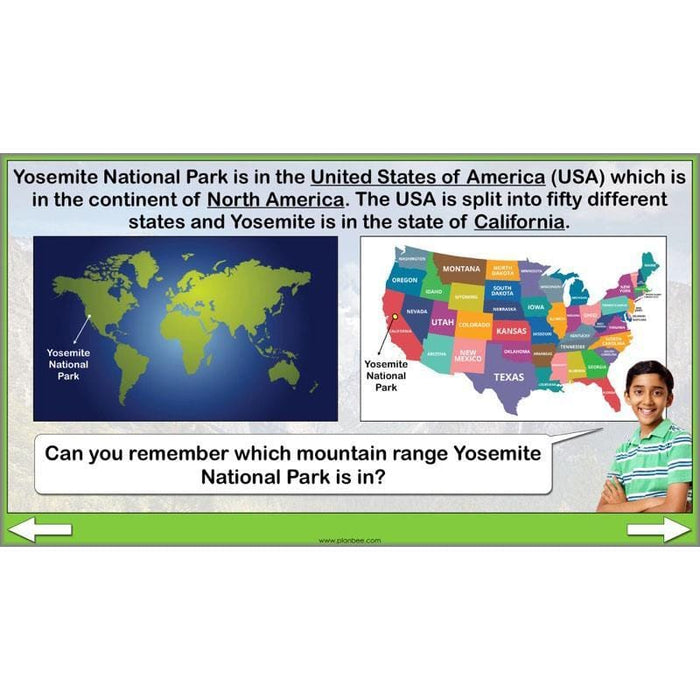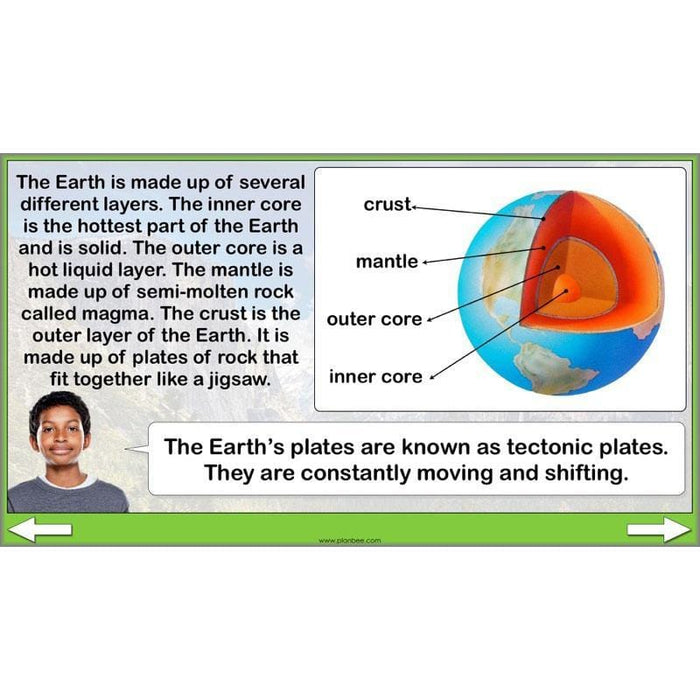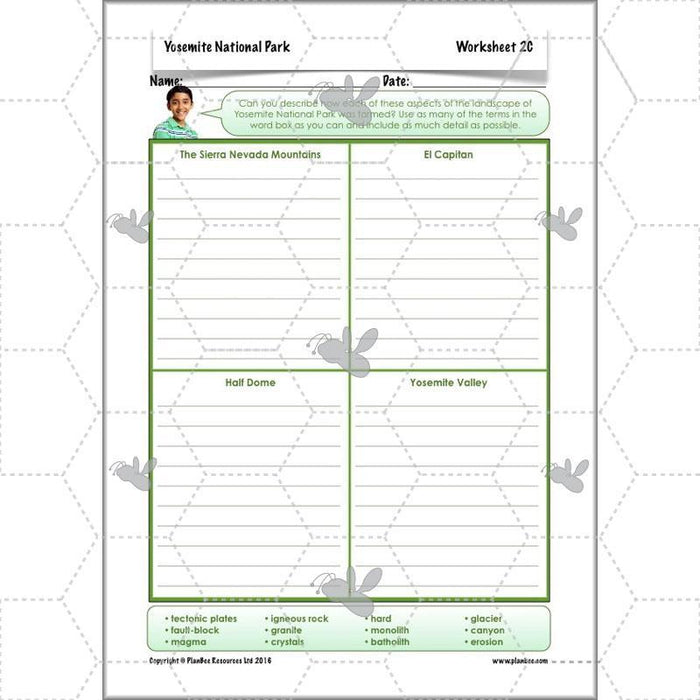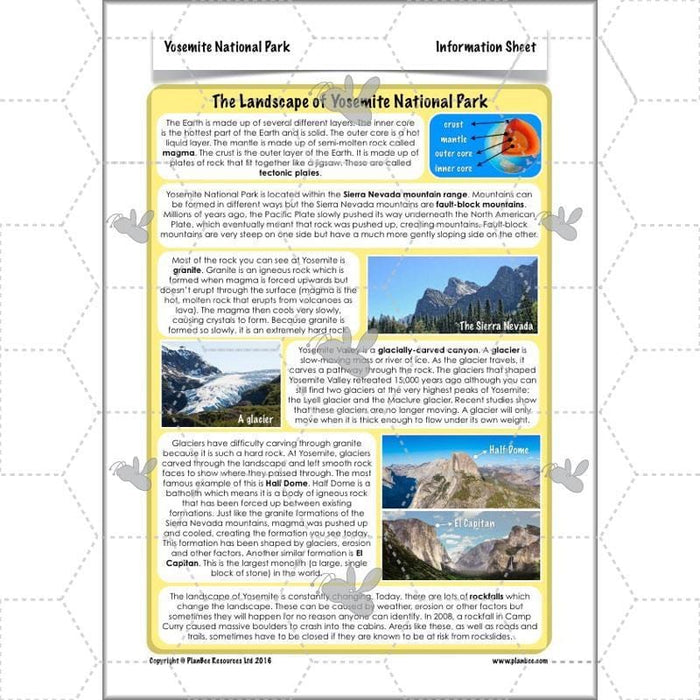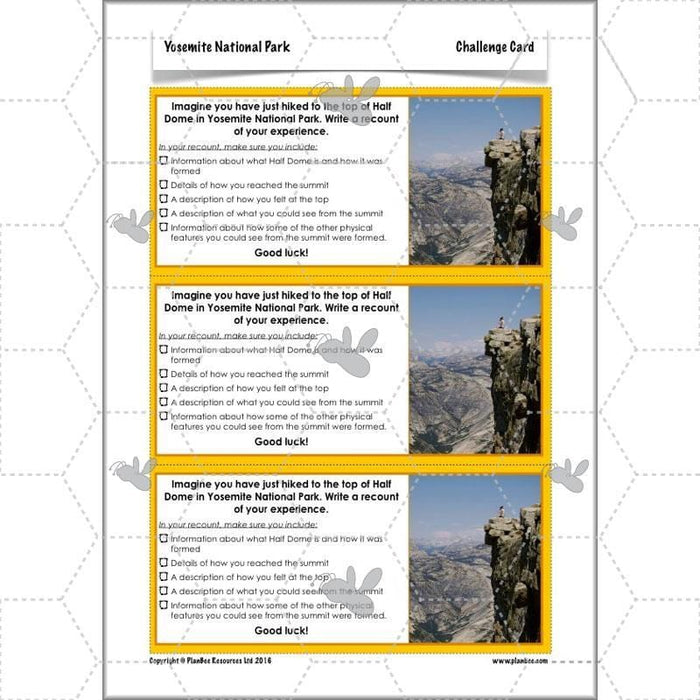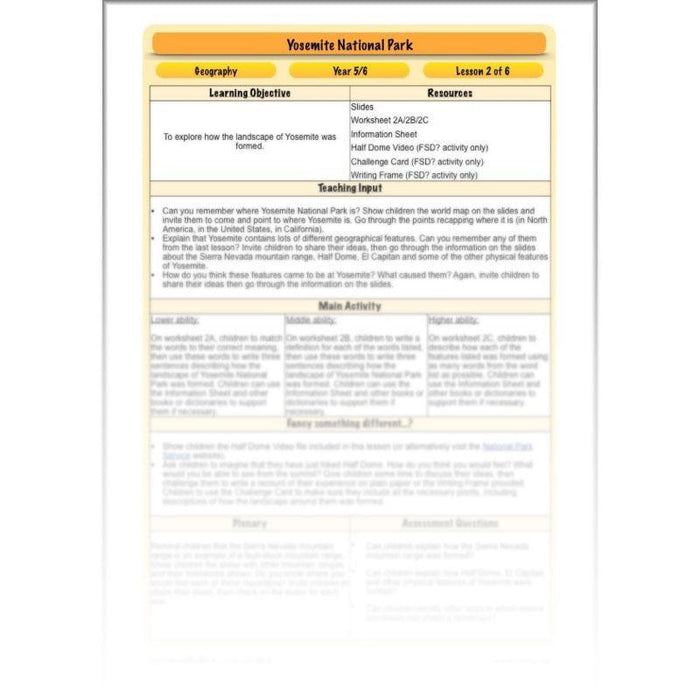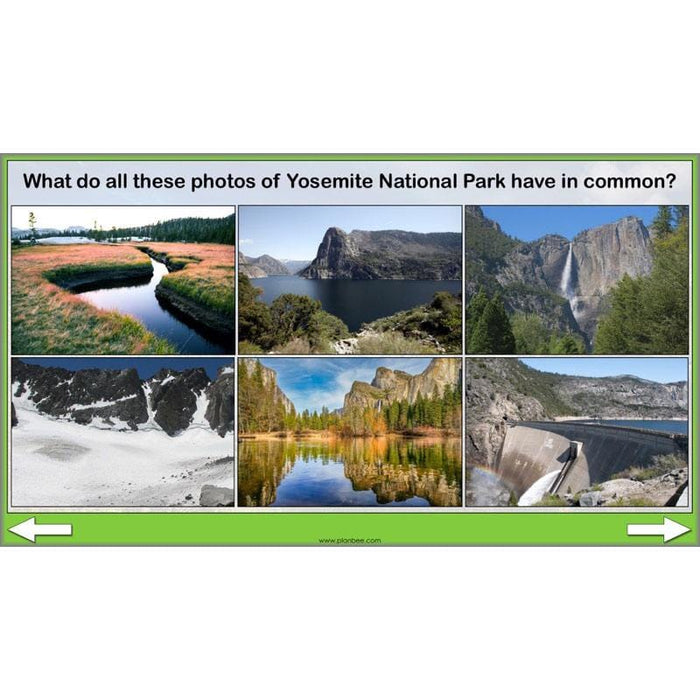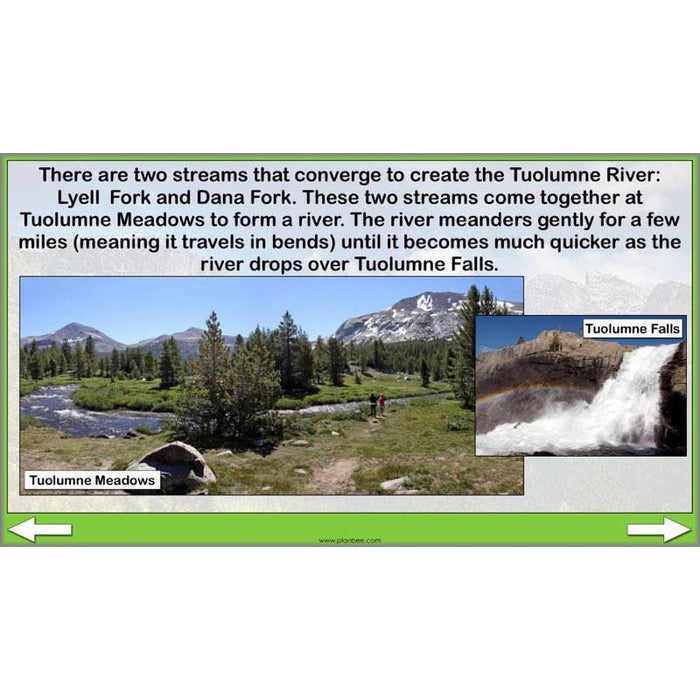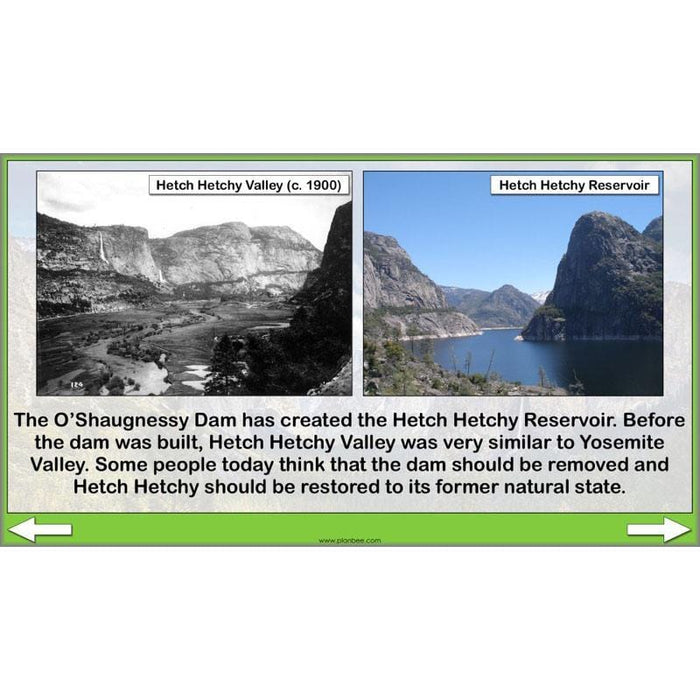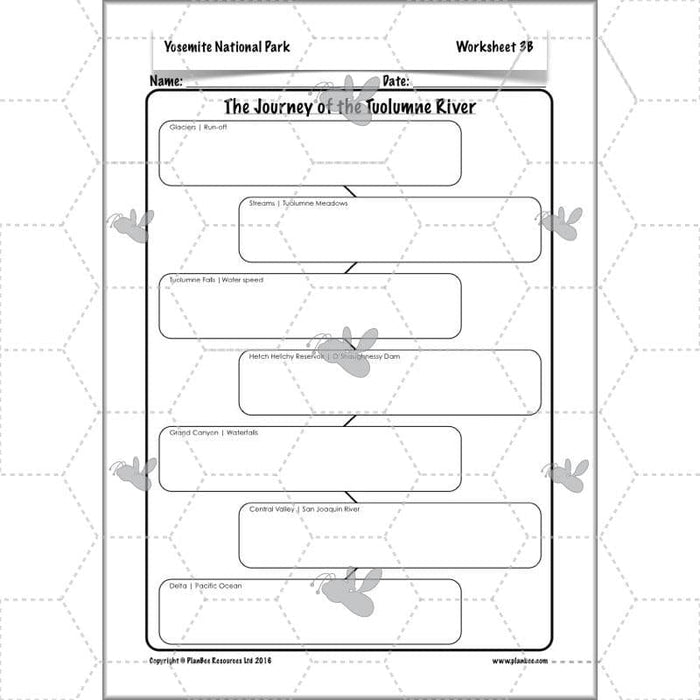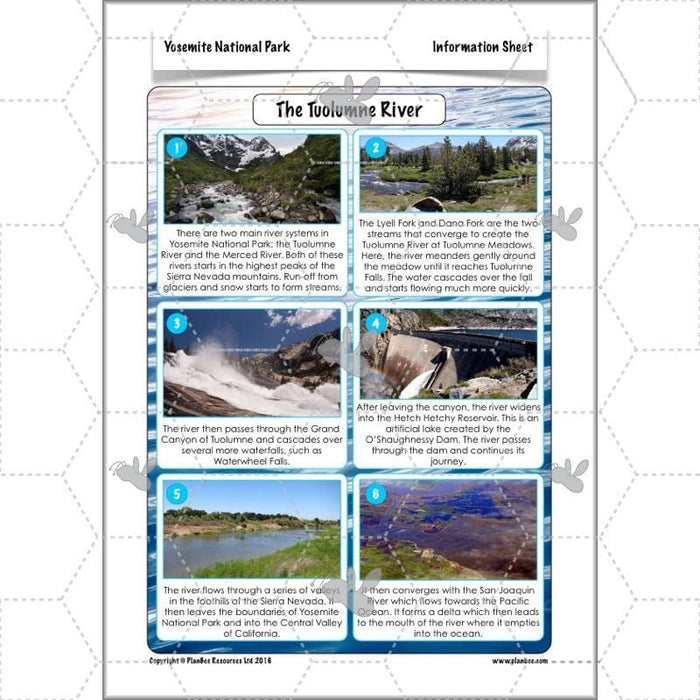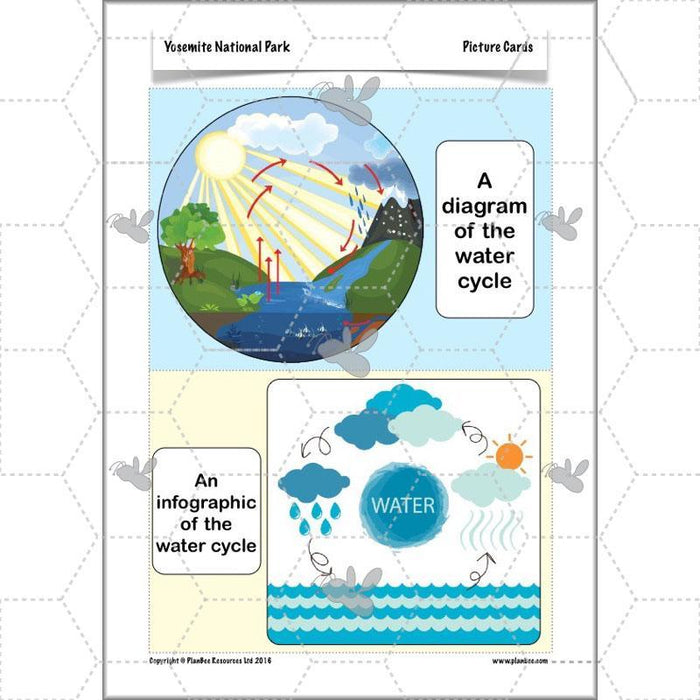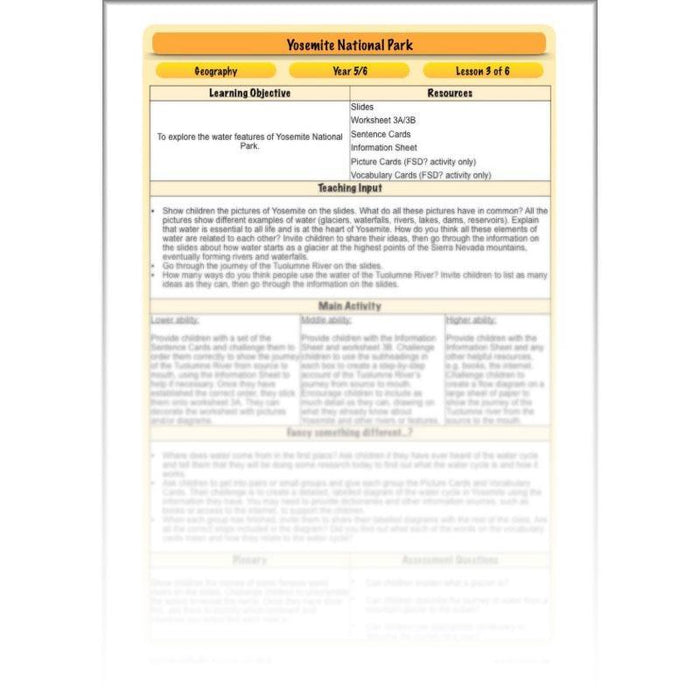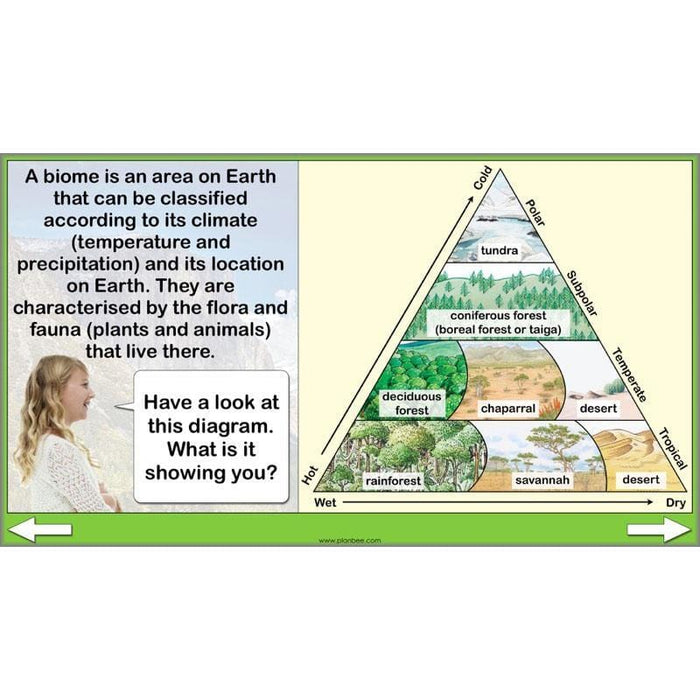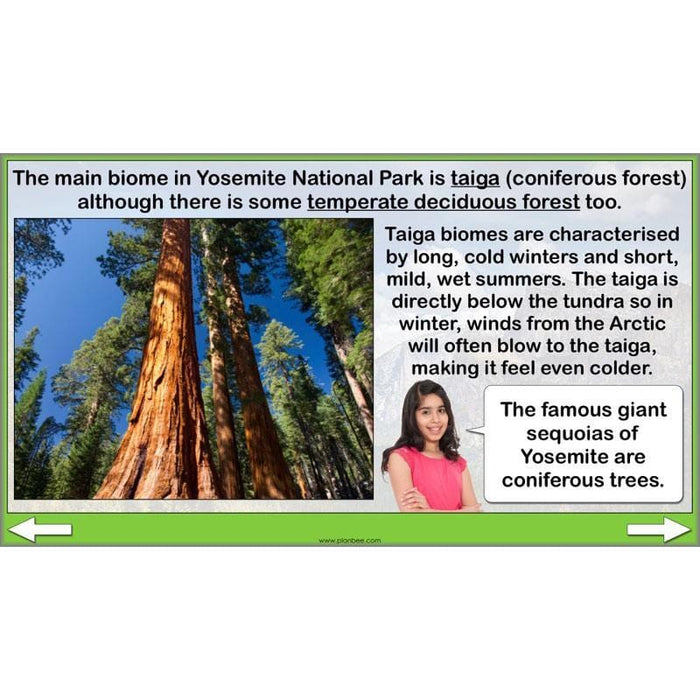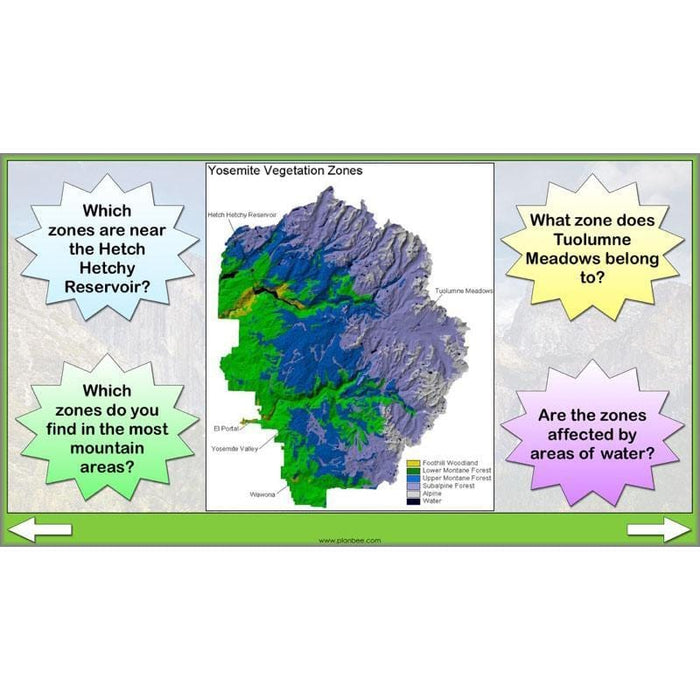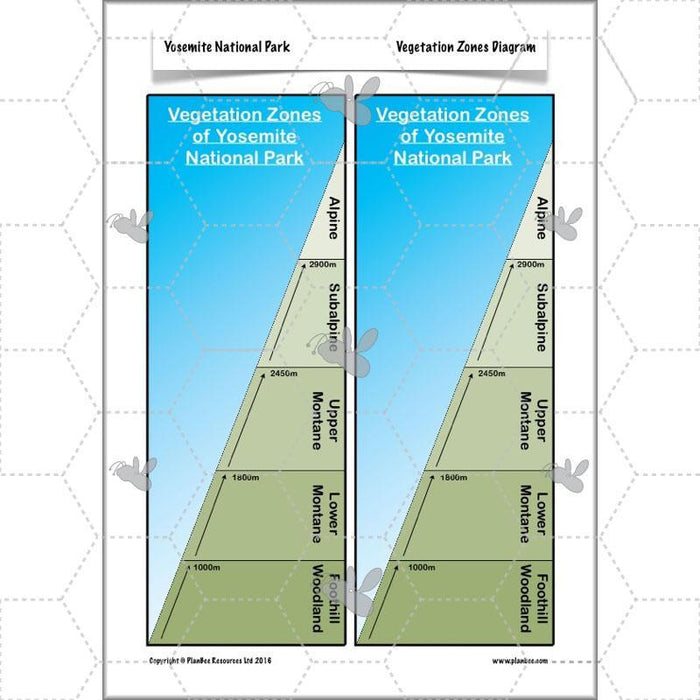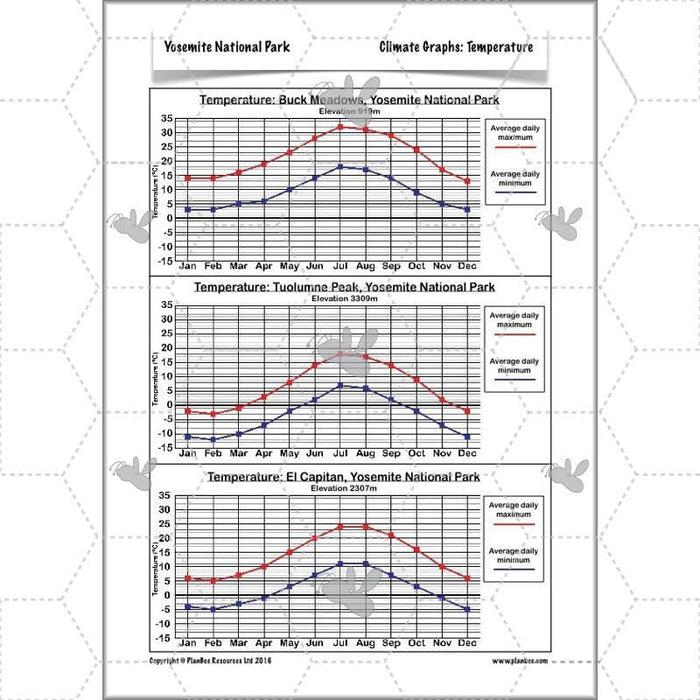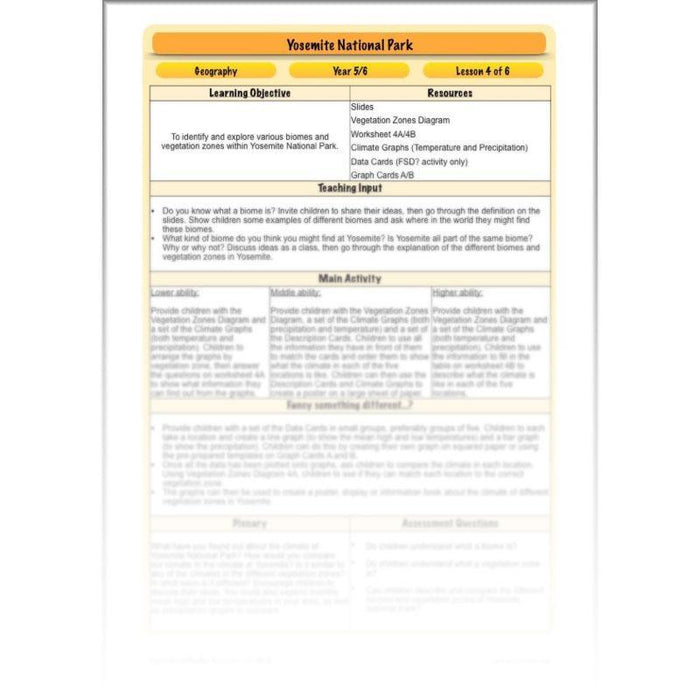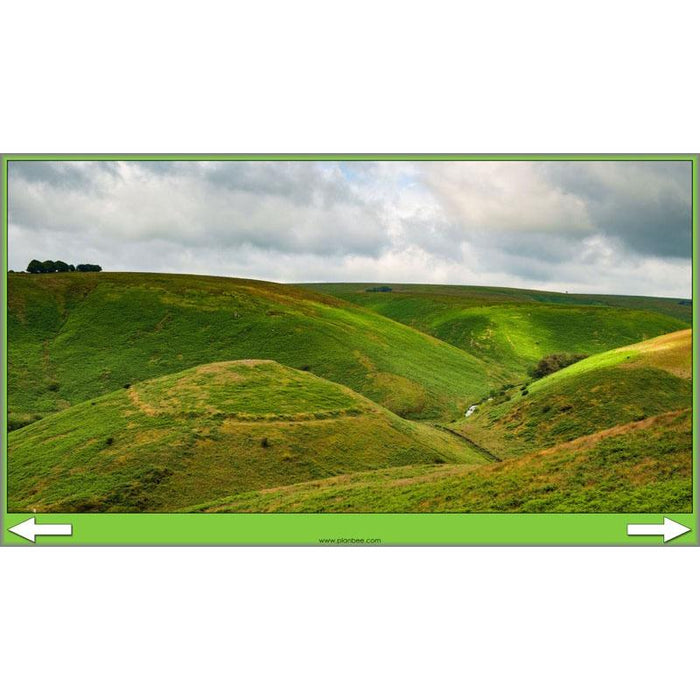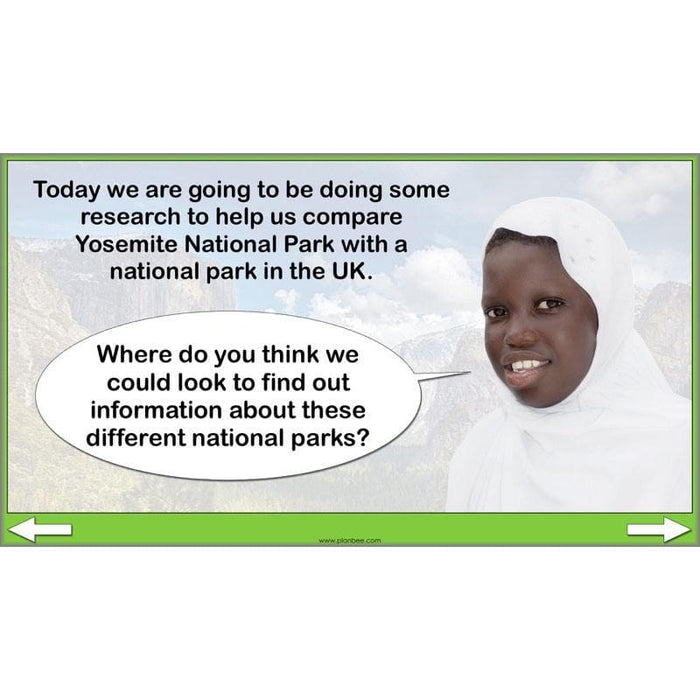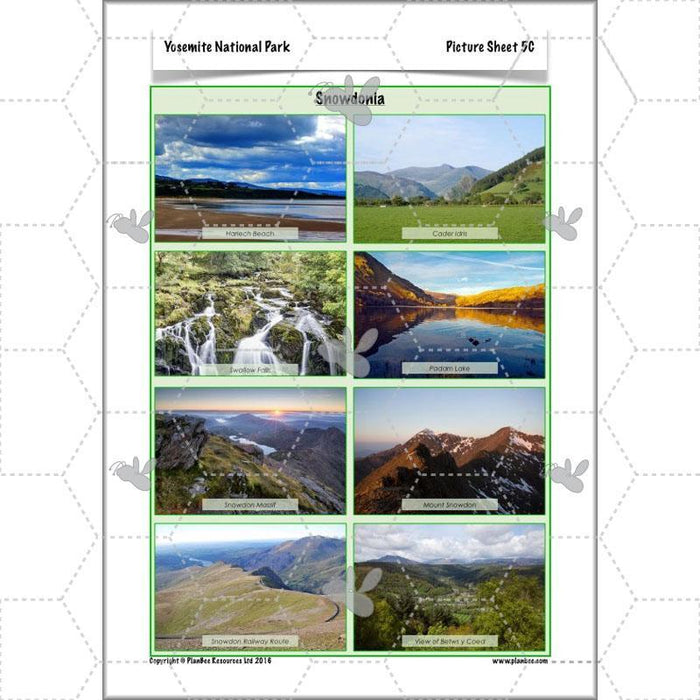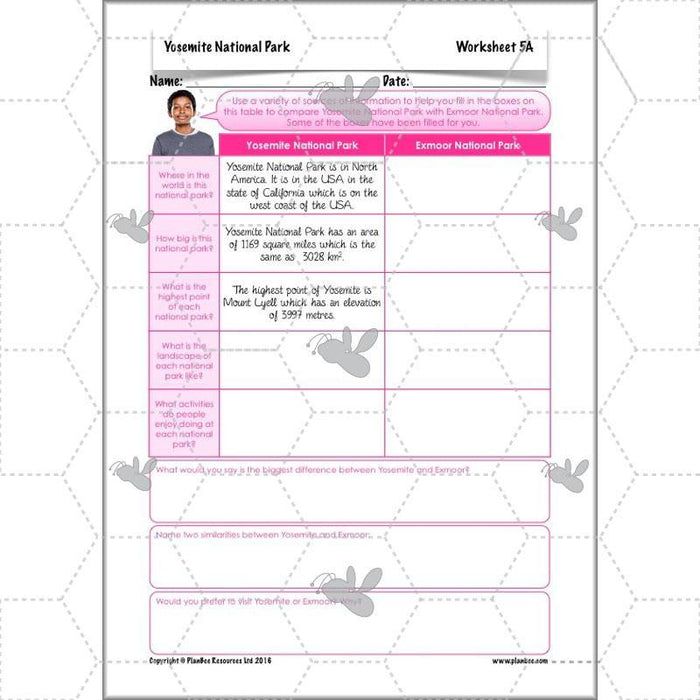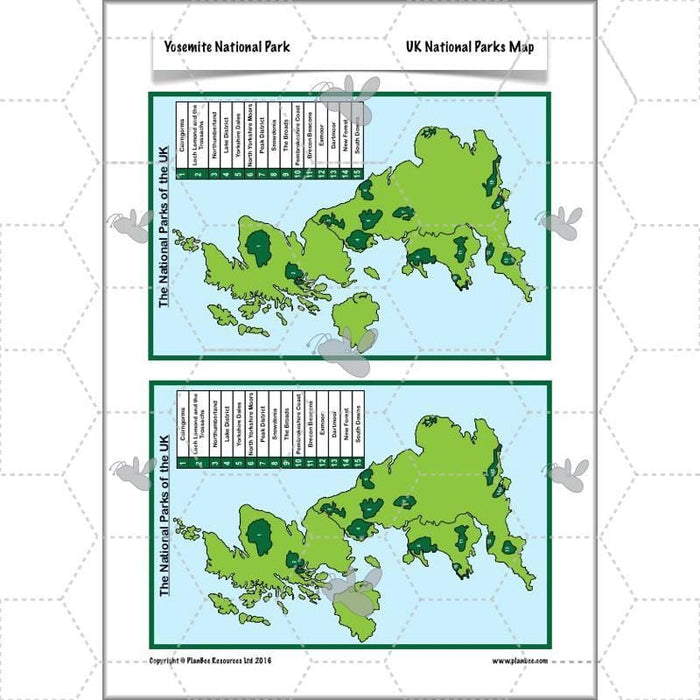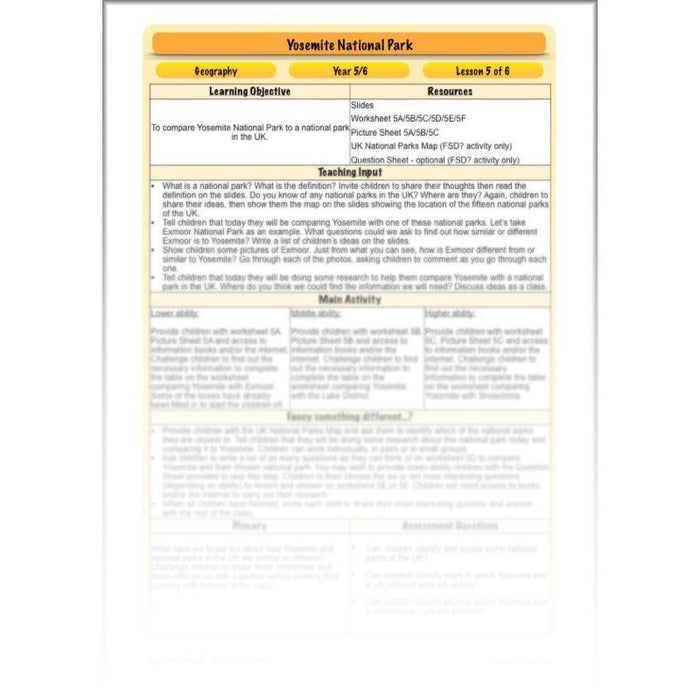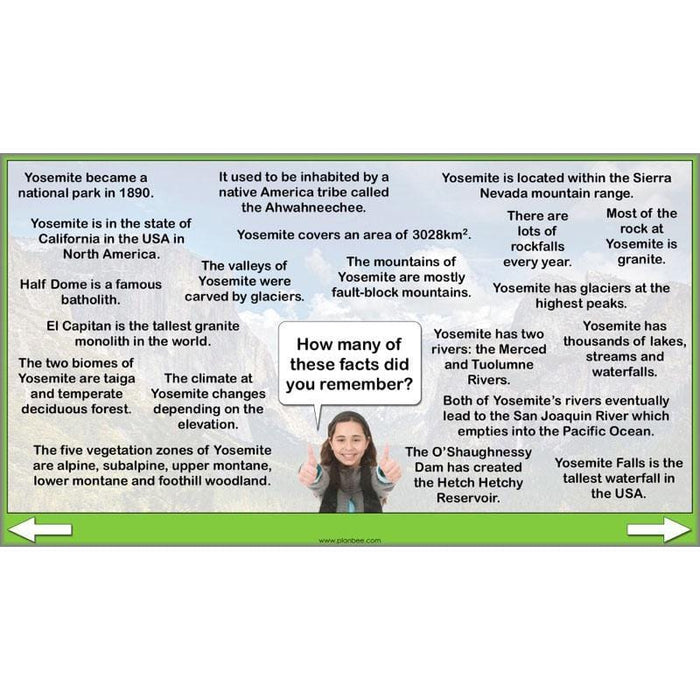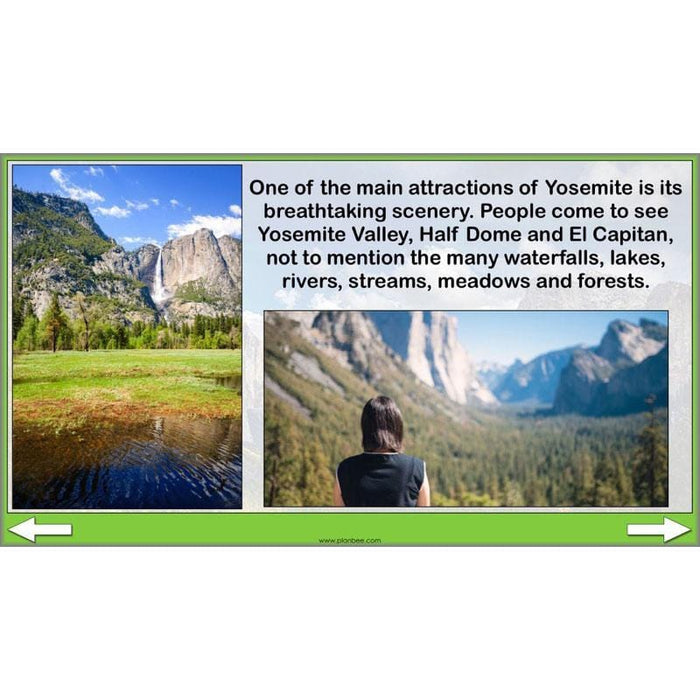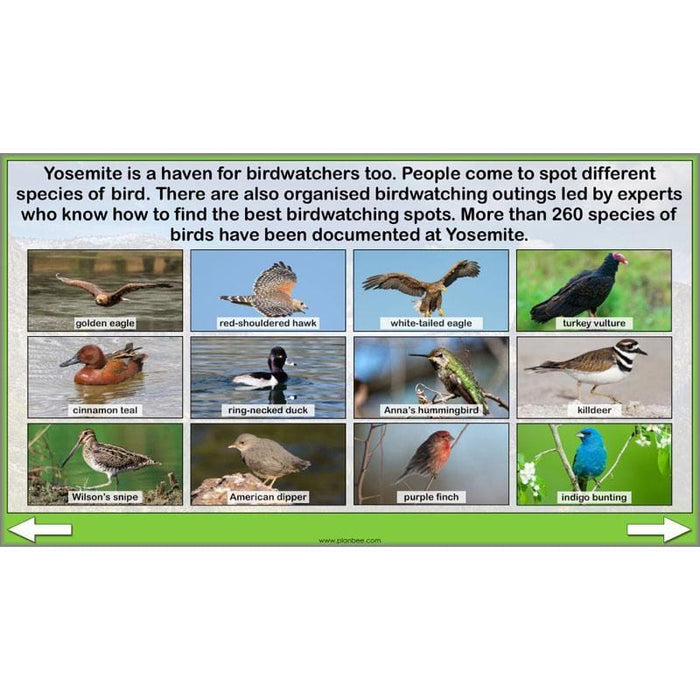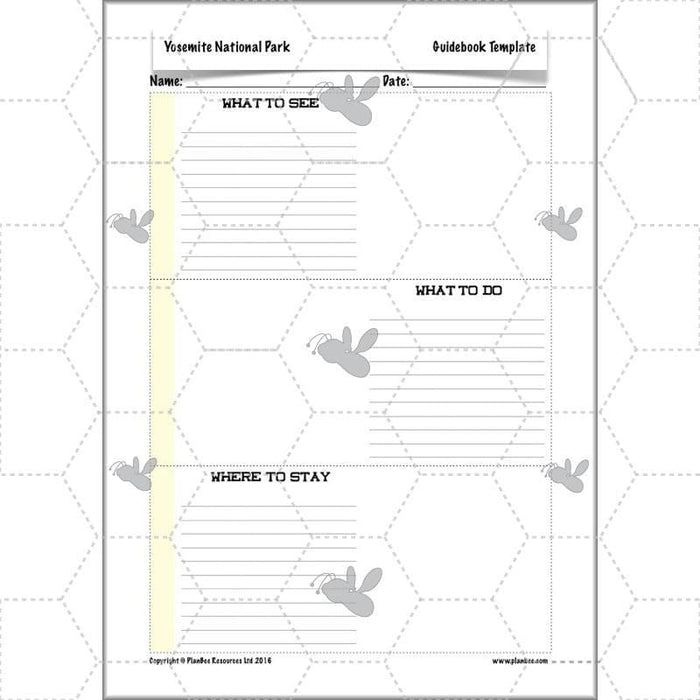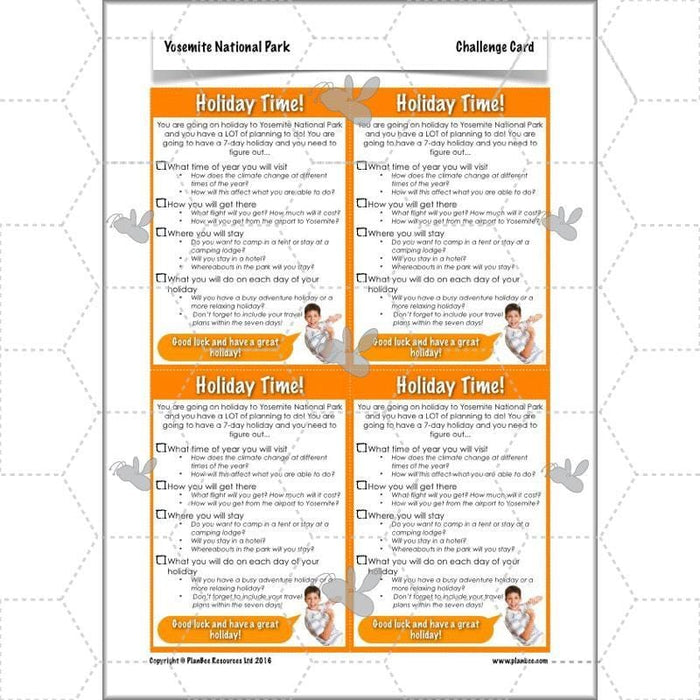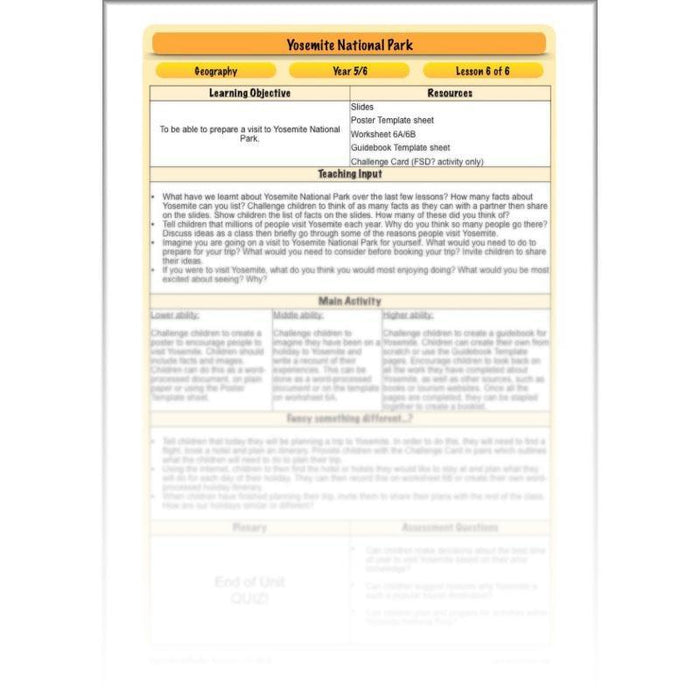#TheCompleteSeries6lessons
With lesson plans, informative and engaging slides and a variety of printable resources to support their learning, this KS2 Geography scheme of work provides everything you need to teach your class about this fascinating and diverse area of North America.
#Lesson1WelcometoYosemite
The first lesson in this series starts by identifying what Yosemite National Park is and locating it on a world map. Your class will learn to locate Yosemite by continent, country and state before finding out a little about what Yosemite is like.
What's included:
- Lesson plan
- Slides
- Activity ideas
- Differentiated worksheets
- Fact cards
- Picture cards
- Challenge cards
#Lesson2Formation
This lesson explores some of the physical geographical features of Yosemite and how they were formed. Looking back over millions of years, they will find out the formation of the Sierra Nevada mountains and Yosemite Valley, as well as how some of the most famous features of Yosemite, such as Half Dome and El Capitan, were formed. They will also discover how the landscape is changing today thanks to glaciers, erosion and other factors.
What's included:
- Lesson plan
- Slides
- Activity ideas
- Differentiated worksheets
- Information sheet
- Half Dome video
- Challenge cards
- Writing frame
#Lesson3WaterFeatures
Your class will find out about the water system at Yosemite Park, following the path of water from the highest peaks in the glaciers to its eventual journey into the Pacific Ocean. This lesson teaches your class some of the key vocabulary relating to the journey of a river, as well as challenging them to think about the effects of features such as the O'Shaughnessy Dam and the Hetch Hetchy Reservoir. There is also the opportunity for them to explore the water cycle.
What's included:
- Lesson plan
- Slides
- Activity ideas
- Differentiated worksheets
- Sentence cards
- Information sheet
- Picture cards
- Vocabulary cards
#Lesson4BiomesandVegetationZones
The fourth lesson in this series helps your class to identify and understand the various biomes and vegetation zones within Yosemite and how they are similar and different. They will look at the climates within different vegetation zones and think about what effect the various climates have on the landscape.
What's included:
- Lesson plan
- Slides
- Activity ideas
- Differentiated worksheets
- Vegetation zones diagram
- Climate graphs
- Data cards
- Graph cards
#Lesson5ComparingNationalParks
Bringing your pupils closer to home, this lesson gives them the opportunity to compare Yosemite National Park to a national park within the UK. Your class will identify where each of the UK's national parks are before thinking of different questions they could explore to help them compare a park in the UK with Yosemite. There is then the chance to carry out some research of their own as they find out the answers to their questions.
What's included:
- Lesson plan
- Slides
- Activity ideas
- Differentiated worksheets
- Picture sheets
- UK National Parks map
- Question sheet
#Lesson6HolidayTime
The final lesson in this series gives your class the chance to consolidate everything they have learnt about Yosemite by planning their own visit to the park. Using what they have found out, they will think about when the best time of year would be to visit, what activities they would like to do, what animals they would like to spot, which features they would like to visit, and much more. They can express their learning in a variety of ways from a trip itinerary to a Yosemite guidebook.
What's included:
- Lesson plan
- Slides
- Activity ideas
- Differentiated worksheets
- Poster template sheet
- Guidebook template sheet
- Challenge card
Free Overview (Medium-Term Plan)
Download a free overview to support your teaching of this scheme of work.
Free Assessment Grid
Download a free, editable assessment grid to support your teaching of this scheme of work.
Curriculum Objectives covered
- KS2 - locate the world’s countries, using maps to focus on Europe (including the location of Russia) and North and South America, concentrating on their environmental regions, key physical and human characteristics, countries, and major cities
- KS2 - name and locate counties and cities of the United Kingdom, geographical regions and their identifying human and physical characteristics, key topographical features (including hills, mountains, coasts and rivers), and land-use patterns; and understand how some of these aspects have changed over time
- KS2 - understand geographical similarities and differences through the study of human and physical geography of a region of the United Kingdom, a region in a European country, and a region within North or South America
- KS2 - describe and understand key aspects of physical geography, including: climate zones, biomes and vegetation belts, rivers, mountains, volcanoes and earthquakes, and the water cycle
- KS2 - describe and understand key aspects of human geography, including: types of settlement and land use, economic activity including trade links, and the distribution of natural resources including energy, food, minerals and water
- KS2 - use maps, atlases, globes and digital/computer mapping to locate countries and describe features studied
